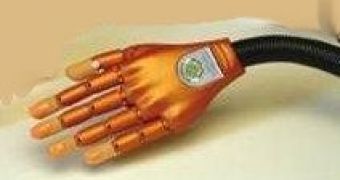This is a step further towards the androids. A new artificial finger can assess an array of tactile traits for materials you would like to find out. A team led by Cathy Barnes at the University of Leeds, UK, is building a life-size silicone rubber finger.
To determine the roughness or smoothness of a material, the digit places a sample on a pressure-sensitive platform and permits a motor to "stroke" the finger across it. Information is delivered to a software that then compares the sideways pressure that the platform feels with the sideways power applied to the finger. This offers information about friction or roughness.
Meanwhile, the software assesses how much downwards force the material absorbs by making a comparison between the force applied by the finger with the force felt by the platform. Softer materials absorb more force. Another sensor at the finger's tip determines temperature.
The team is looking for volunteers to touch different materials and describe what they feel to fit the artificial finger's data on the same materials. They want to correlate all the smoothness, softness and temperature values to an array of tactile sensations. These techniques could be used for packaging materials.
"Industry knows a lot about the importance of the visual design of packaging but there's a lack of understanding about the feel appeal. Imagine a carton of fruit juice that's as soft as peach skin," said Barnes, who is also a manager at the Faraday Packaging Partnership in Leeds.
Earlier this year, the third generation of prosthetic limbs also came with an innovation: patients can regain their sense of touch.
Physicians employ for these stumps of the patients' sensory nerves, which receive impulses of heat and touch from their amputated arms that are attached to the skin on the patients' chest. Now the patients can regain the sensation of having their arm touched when the patch of skin on their chest is touched.
Researchers are also developing a prosthetic arm able to pick up sensory input (for pressure, vibrations, and temperature) and transmit it to the chest zone that feels like the hand, by now only for pressure, using a plunger-like mechanism.

 14 DAY TRIAL //
14 DAY TRIAL //